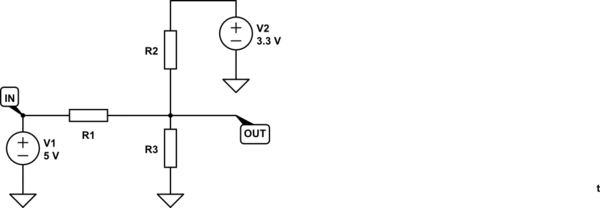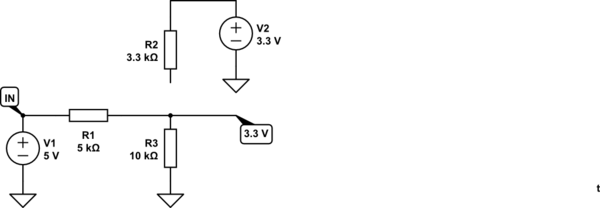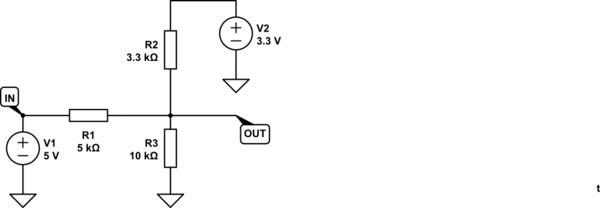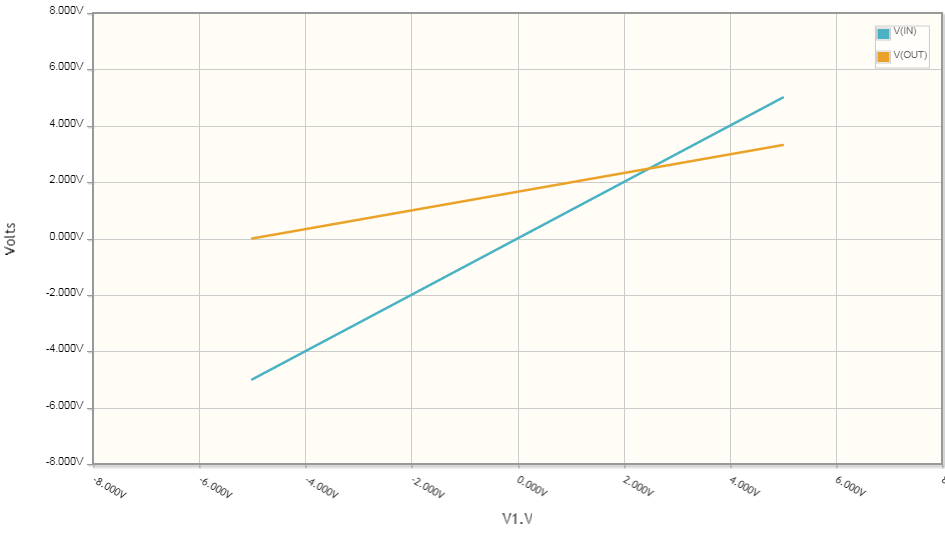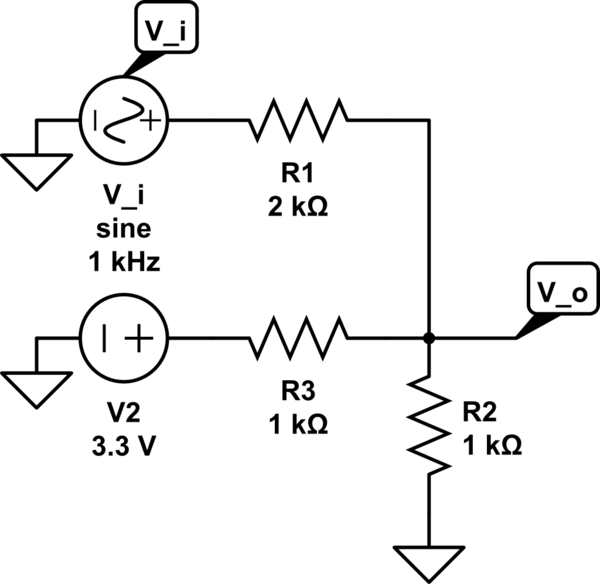You only need three resistors to produce your transfer function.

simulate this circuit – Schematic created using CircuitLab
The equation for the circuit is...
$$ V_{out} = \frac { \frac {V_{in}}{R1} + \frac {V_{CC}}{R2} }
{ \frac {1}{R1} + \frac {1}{R2} + \frac {1}{R3} }
\tag {EQ1} $$
You want to produce a transfer function that looks like...
$$ V_{out} = 0.33 V_{in} + 1.65 \tag {EQ2} $$
Equating EQ1 and EQ2 gives...
$$ V_{out} = \frac { \frac {V_{in}}{R1} + \frac {V_{CC}}{R2} }
{ \frac {1}{R1} + \frac {1}{R2} + \frac {1}{R3} }
= 0.33 V_{in} + 1.65 $$
Both equations contain a constant term and a term that is proportional to Vin. Therefore we can separate them into two equations (one for the proportional term and the other for the constant term) ...
$$ \frac { \frac {V_{in}}{R1} }{ \frac {1}{R1} + \frac {1}{R2} + \frac {1}{R3} }
= 0.33 V_{in} \tag {EQ3} $$
$$ \frac {\frac {V_{CC}}{R2}} { \frac {1}{R1} + \frac {1}{R2} + \frac {1}{R3} } = 1.65 \tag {EQ4} $$
We now have two equations and three unknowns.
Dividing EQ3 by EQ4 and solving for R2 gives us...
$$ R2 = R1 \cdot 0.33 \cdot \frac {V_{CC}} {1.65} \tag {EQ5} $$
Plugging in EQ5 into EQ3 and solving for R3 gives...
$$ R3 = \frac {0.33 \cdot R1}{1 - 0.33 - \frac {1.65}{V_{CC}} } \tag {EQ6} $$
We have three resistors, but because EQ3 and EQ4 only created two constraints the system is under-constrained. This means we may arbitrarily pick one of the resistors. Because of the structure of EQ5 and EQ6 it is probably easiest to pick R1.
For example, if we pick R1 = 1 kΩ and VCC = 3.3 V we get...
$$ R2 = \frac {1 \mathrm {k\Omega} \cdot 0.33 \cdot 3.3 \mathrm V}
{1.65 \mathrm V} = 0.66 \mathrm {k\Omega} $$
$$ R3 = \frac {0.33 \cdot 1\ \mathrm {k\Omega}}
{1 - 0.33 - \frac {1.65\ \mathrm V}{3.3\ \mathrm V}} = 1.941\ \mathrm {kΩ} $$


